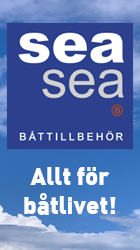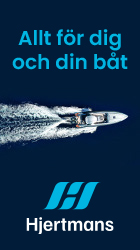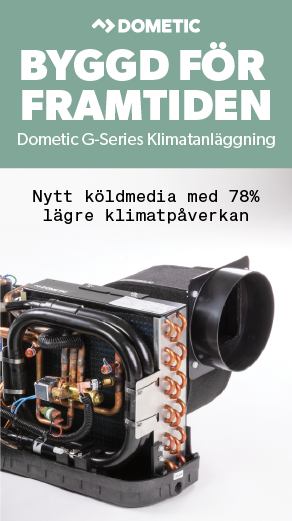Ericsson 3 valde att gå in i “Stealth mode” när knappt 200 Nm återstod till etappmålet i Rio. Den nordiska båten med Mange Olsson som skeppare har tidigare under den här extremt avgörande och långa deltävlingen gjort ett par lyckade taktiska manövrar. Lyckas de än en gång så vinner de hela delsträckan.
Mycket talar för att Mange & Co. tar vinstlotten i sin chansning. De förvillar de andra båtarna, som samtliga har minst 100 Nm längre väg till mål än Ericsson 3.
Här är den senaste pressreleasen:
Wednesday 25 March 2009, 10:00 GMT
THE TEN ZULU REPORT, LEG 5, DAY 40
By Mark Chisnell
Please, release me, let me go… Rio beckons – when the Kiwis start saying enough is enough, you know that it really is enough. And now, finally, it looks like the bulk of the fleet have hopped out of the cage and headed for open ocean, clearing one more hurdle between them and the finish.
Ericsson 3 led the fleet out of the high pressure and into the breeze over night. Magnus Olsson and his Nordics have extended their lead – now in excess of 100 miles. But after a blissful period with wind speeds and boat speeds creeping into double digits for the front four boats, it’s slowed down a little for the leader this morning. And with conditions likely to remain unpredictable as they approach the Brazilian coast, no one can count on closing out this epic leg until they are tied up at the dock with a caipirinha in their hand.
The good news was that at 10:00 ZULU this morning, Ericsson 3, Ericsson 4, PUMA and Green Dragon all looked to have got themselves north of the centre of the high pressure that has tortured the leading pack since the weekend. They all had the east or south-easterly wind direction that would be expected to flow anti-clockwise above the high, at 12 o’clock relative to the centre. And in the case of Green Dragon, it was veritably howling, blowing 20 knots.
Today’s graph of Distance Run in 24 Hours (24HR_RUN) and Distance to Leader (DTL) shows how each of the front four boats escaped into the breeze as they clawed their way north, allowing the gaps between them to once again extend. The further north they were, the earlier their speed started to pick up, and the earlier the Distance Run stopped decreasing and started improving.
The opposite was true for Telefonica Blue, whose blue line on those two graphs is going in the opposite direction to the others. There’s a good reason for that – Bouwe Bekking and his team are on the other side of the centre of the high pressure. And their gains finally came to a halt as they crashed into it yesterday. They now find themselves with the very light westerly breeze to be found at 6 o’clock relative to the centre. And that means that they still have the whole area of light wind to negotiate.
So it’s a good job that these boys have plenty of food. Bouwe Bekking clarified their situation this morning, after some mixed messages from the boat yesterday. Bowman Michael Pammenter’s audio interview to Amanda Blackley gave the impression that they had been rationing for some time. But he was referring to snacks – power bars, dried fruit and so on – rather than the cooked meals which Bekking had previously told us that they have plenty of in this earlier email.
Bekking put the record straight in another email. He reckoned that there was still every opportunity for his crew to put down 5,000 calories a day between here and the finish. Nevertheless, even aboard the relatively well-stocked Telefonica Blue, Pammenter reckoned that he’d lost five kilograms (an answer of sorts for Kostya in the Comments). Do you think it’d ever work as a weight-loss programme – the six weeks, two oceans and five kilos diet? Maybe not, the problem isn’t so much a lack of food, as the sheer unpalatability of the freeze-dried meals after 39 days.
I’m not sure the same could be said for Green Dragon, who we saw yesterday trying to get four days of food to last for seven. Skipper, Ian Walker, reported that their difficulties were multiplying, as they now have a fuel problem as well as a food shortage. The alternator on the generator isn’t working, forcing them to charge off the main engine, which takes more fuel. They could break into the emergency reserve, but that might cost points – fortunately, they are moving again, and their ETA (Estimated Time of Arrival or ARRIVAL in the Data Centre) is improving. And both Walker and Ken Read in this email, found plenty of reasons to look on the bright side. The sun’s shining, we’re going to Rio – what’s not to like?
There’s a contrast between the two Ericsson boats that, unsurprisingly, made their own decisions about what to take with them. Ericsson 3’s skipper, Magnus Olsson reported to Guy Swindells in a short audio interview that they had packed food for 40 days, plus a bit, and have plenty.
Then, when Guy Swindells spoke to Ericsson 4 navigator, Jules Salter, in a second audio interview yesterday, Salter revealed that they had originally packed food for 40 days, but subsequently decided to cut it back by one bag to 36 days. Fortunately, they had realized early that it was likely to take longer, and started putting food aside from the well-stocked bags. No one was going to get fat, reckoned Salter, but they had enough – mostly they were, “just eating out of boredom.”
Ah yes, the boredom – the light wind, and the endlessly receding ETA. In that same interview, Salter reckoned that they would hold some decent breeze for about 36 hours – and we’re about mid-way through that – then things would get tricky again as they approached the finish. While he thought it was unlikely that they would catch Ericsson 3, he conceded that there was still some racing left to do.
If we look at today’s Predicted Route image we can see why. By tomorrow morning, the easterly breeze that’s driving them home will start to weaken badly around the finish line and along the coast south of Rio. Add to that the reputation of Guanabara Bay, notorious for light winds, and there is every prospect of those final miles being difficult.
The Arrival time in the Data Centre has Ericsson 3 into Rio a comfortable nine hours ahead of her teammate. And that’s because she’s expected to get there before the wind starts to die – but if she doesn’t, the gap will close, as is anticipated for Ericsson 4. The Prediction has PUMA finishing within four hours of the overall leader tomorrow. The other one to watch is the gap between Green Dragon and Telefonica Blue, currently nine hours to the Dragon’s advantage. But a huge amount depends on how fast Bekking and his men can get their boat across the centre of the high – that number could close or open spectacularly.
Dieter Steffen suggested that – to see what faces them at the finish – we keep an eye on the conditions at Santos Dumont Airport, which fringes Guanabara Bay and was reporting a wind speed of two miles an hour this morning – yikes! Is it possible that we could get a big enough slowdown for boats to lose leads pushing three digits or more? Somehow, I can’t believe it, but while I reserve the right to subsequently revert to my mantra, it’s a sailboat race, and anything could happen… at this moment, I wouldn’t be putting money on anything other than them creeping home in the same order.
And, as I said yesterday, whatever the theory predicts, it’s no less stressful when the boat is next to motionless, and too easy to imagine that everyone else is doing 15 knots straight at the mark. After reading about how that feels on Ericsson 3 in yesterday’s email, we can now see it in this .tv clip. Things were no more cheerful aboard Ericsson 4 – they have to look over their shoulder at PUMA. Perhaps it’s because PUMA have a 300+ mile buffer to Green Dragon – and can only gain from the situation – that they managed to pull off the trick of looking back fondly on the adventure, even though they haven’t actually finished it yet.
And looking back fondly is something I’m about to start doing myself – that will have to be it for the TEN ZULU for Leg 5, as I’ve got to go and climb on a kerosene canary bound for the aforementioned Bay. I’ll be back with the Leg 6 preview before you know it. And if you got rickrolled in the course of today’s story … sorry, but I promised someone a long time ago – hopefully long enough that they too, got caught.
The TEN ZULU REPORT (so called because it follows the 10:00 GMT fleet position report, and Zulu is the meteorologist’s name for GMT).







